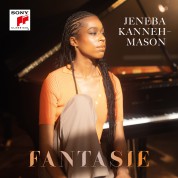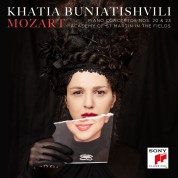
Classics Explained: Schubert - Piano Quintet in A Major, 'Trout' - CD
Tükendi
Bu Ürün Stoklarımıza Girince Haberdar Olmak İster Misiniz?
(+) Stoklara Girince Haber Ver
(+) Stoklara Girince Haber Ver
Ürün Hakkında
Barkod: 0636943807521
, Katalog No: 8.558075-76 , Firma: Naxos
, Seri: Naxos Classics Explained
, Yayınlanma Tarihi:
20 Aralık 2002
Format Türü: CD, Format: 2 CD
Eser Listesi
- CD - 1
- An Introduction to … SCHUBERT: Piano Quintet "Trout" (1819)
- 1. Introduction, origins
- 00:01:39

- 2. Imagery, analogy and the shape of the things to come; the opening flourish
- 00:01:50

- 3. The unusual presence of the double-bass
- 00:00:54

- 4. A palette of tone colours and the emergence of a theme
- 00:00:47

- 5. Trouble getting off the ground, but the key is not in doubt.
- 00:00:49

- 6. Jumping the queue: Schubert takes a lesson from Mozart.
- 00:01:33

- 7. Mozart demonstrates a traditional transition.
- 00:00:33

- 8. Destination clarified
- 00:00:07

- 9. Mozart confirms our arrival.
- 00:00:08

- 10. A Schubertian shocker from a later work
- 00:00:52

- 11. Rejoining the 'Trout', with a reminder
- 00:00:27

- 12. The piano joins the strings with yet a third variant of the theme.
- 00:00:31

- 13. A rhythmic motto: the 'triplet motif'
- 00:01:26

- 14. We get it here.
- 00:00:17

- 15. We get it there.
- 00:00:17

- 16. We find it everywhere, even in the double-bass.
- 00:00:27

- 17. The strings' answer to the piano's opening flourish
- 00:00:36

- 18. The two-part structure of the 'answering motif'...
- 00:00:24

- 19. ...but scarcely ever the same way twice
- 00:00:34

- 20. The piano and strings now share the material for the first time.
- 00:00:42

- 21. Conversation as the first principle of chamber music
- 00:00:43

- 22. Opening (introductory) section heard complete
- 00:01:01

- 23. The violin and double-bass in partnership
- 00:01:16

- 24. The violin and piano swap roles.
- 00:00:59

- 25. Transition to second main theme; triplets now everywhere
- 00:01:12

- 26. On the threshold of the new theme
- 00:00:30

- 27. Second main theme (a 'love duet'), shared by cello and viola
- 00:01:24

- 28. The abandonment of octaves in the piano changes the tone colour.
- 00:01:07

- 29. A surprising change of tone and a premonition
- 00:00:39

- 30. A return to lyricism, but the cello jumps the gun
- 00:00:37

- 31. A buoyant, skipping new theme is given to the solo piano.
- 00:00:36

- 32. Re-entry of the strings as the violin takes up the new theme
- 00:00:25

- 33. A transitional theme, and another Schubertian key-jump
- 00:01:33

- 34. We sense the imminent arrival of the closing theme.
- 00:01:31

- 35. A sudden, hushed key-change introduces part two of the closing theme.
- 00:00:40

- 36. The exposition comes to an end.
- 00:00:32

- 37. Cue to complete exposition
- 00:00:06

- 38. Music: exposition complete
- 00:04:09

- 39. Introduction to the development; the genetic code of 'key'
- 00:07:20

- 40. The contrasting aural properties of piano and violin
- 00:01:03

- 41. The ponderous double-bass is featured in the first main theme
- 00:00:49

- 42. The strings are liberated from servitude, but are a long way from home.
- 00:00:42

- 43. A joyful conversation and a change of pace in the piano
- 00:01:06

- 44. The piano takes the melodic lead again.
- 00:00:31

- 45. A conversation between violin and piano leads to the exposition...
- 00:01:20

- 46. ...but Schubert gets it 'wrong'.
- 00:01:35

- 47. Music: first movement (complete)
- 00:09:09

- 48. Introduction to second movement
- 00:01:53

- 49. The violin now takes theme one.
- 00:00:29

- 50. The piano regains the theme.
- 00:00:42

- 51. The violin and piano round off first section with the new 'closing' theme.
- 00:00:35

- 52. A Major change of tone: a passing cloud and a dark new key
- 00:01:19

- 53. The piano abandons its octaves, but not its triplets, in the new 'Hungarian' theme.
- 00:01:28

- 54. The sun returns with a new theme, in two contrasting parts.
- 00:01:21

- 55. An evaporating dialogue between violin and piano
- 00:00:58

- 56. A Major mood change as twilight falls
- 00:01:12

- 57. Cue to whole movement
- 00:00:33

- 58. Music: second movement (complete)
- 00:07:30

- CD - 2
- An Introduction to … SCHUBERT: Piano Quintet "Trout" (1819)
- 1. Introduction to the Scherzo - and a clear four-bar phrase...
- 00:01:37

- 2. ...'answered' by two two-bar phrases
- 00:00:21

- 3. A disconcerting 'echo'
- 00:01:02

- 4. Expectation, frustration and surprise
- 00:00:27

- 5. The phrase length exands from nine to fourteen bars
- 00:00:36

- 6. The beginning of the second half...
- 00:01:07

- 7. ...or should it go from G Minor to D Major?
- 00:00:08

- 8. Doubts are sown as the tonality becomes elusive.
- 00:00:48

- 9. A varied reprise of part one, and the end of the Scherzo proper
- 00:00:33

- 10. A conversational start to the Trio section
- 00:00:40

- 11. Another Schubertian phrase extension
- 00:00:25

- 12. Two overlapping phrases add up to a single theme.
- 00:00:22

- 13. The piano adds a third phrase to the overlap.
- 00:00:32

- 14. The overlaps continue as the key drifts downwads
- 00:00:36

- 15. Another Schubertian key-jump, now to B flat
- 00:00:45

- 16. A dramatic transformation of mood
- 00:00:52

- 17. Awakening from a dream: the main theme's return
- 00:00:51

- 18. Cue to complete Scherzo
- 00:00:11

- 19. Music: third movement (complete)
- 00:03:52

- 20. Enter the trout, at last; a meeting with the original
- 00:00:30

- 21. Music: 'Die Forelle'
- 00:01:59

- 22. Back to the Quintet: the strings, headed by the violin, introduce the theme.
- 00:01:24

- 23. The first variation
- 00:01:41

- 24. The second variation
- 00:01:14

- 25. The third variation
- 00:01:20

- 26. The fourth variation, part one
- 00:01:33

- 27. The fourth variation, part two
- 00:00:57

- 28. The fifth variation
- 00:02:45

- 29. The final variation, part one: violin and piano alone introduce the theme
- 00:00:31

- 30. The final variation, part two: the cello takes the tune.
- 00:00:25

- 31. The final variation, part three: piano and violin return as a duo...
- 00:00:25

- 32. The final variation, part four: ...as do the viola and cello.
- 00:00:17

- 33. The final variation, part five: the entire ensemble is reunited.
- 00:00:39

- 34. Music: fourth movement (complete)
- 00:07:09

- 35. Introduction to the finale: Schubert as wizard of repetition
- 00:02:17

- 36. Easily overlooked: the accompaniment from cello and double-bass
- 00:00:36

- 37. Contrasts of timbre and register
- 00:00:59

- 38. A repetition, and yet not a repetition
- 00:00:07

- 39. A journey begun; the phenomenon of musical gravity
- 00:00:22

- 40. The journey completed
- 00:00:16

- 41. The source of musical gravity
- 00:00:22

- 42. Music: saint-saens - The Carnival of the Animals 'The Pianists'
- 00:00:28

- 43. A scale of shifting tensions
- 00:00:49

- 44. Music: Beethoven, Symphony No. 1 (Finale)
- 00:00:37

- 45. Back to Schubert
- 00:00:39

- 46. The piano embellishes a scalewise descent.
- 00:00:18

- 47. A retrospective moment
- 00:00:33

- 48. Repetition more apparent then real
- 00:01:02

- 49. A taste of phrase rhythm
- 00:01:26

- 50. Shifting patterns of accentuation
- 00:00:27

- 51. The section reviewed
- 00:00:15

- 52. An increasingly sophisticated texture as parts interact
- 00:00:46

- 53. More phrase rhythm
- 00:00:29

- 54. A repetition from the strings...
- 00:00:11

- 55. ...and an answer from the piano
- 00:00:13

- 56. In transition to the secondary key
- 00:00:51

- 57. The origin of the second theme
- 00:00:19

- 58. The second main theme
- 00:00:38

- 59. The closing section begins, with a question answered.
- 00:00:42

- 60. The question repeated, a slightly differnet answer
- 00:00:28

- 61. First theme of closing section reviewed
- 00:00:59

- 62. Remembrance of things past
- 00:00:28

- 63. The piano and strings argue over the harmony.
- 00:01:13

- 64. Emergence of the final theme
- 00:00:24

- 65. An unexpected thunderstorm
- 00:00:51

- 66. The sound of silence
- 00:01:29

- 67. Cue to complete Finale
- 00:01:00

- 68. Music: Finale (Complete)
- 00:06:47

Katkıda Bulunanlar
|
Bu Ürünler İlginizi Çekebilir










